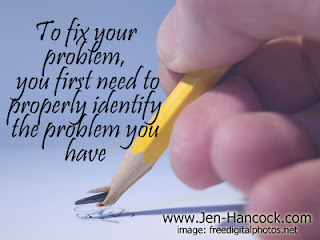I recently gave a talk on how to prevent saboteurs from killing your diversity initiative. I was asked what to do when your company - or your state is hostile to diversity. I am in FL - it's illegal in many companies to do DEI training. DEI is Diversity, Equity and Inclusion. The solution - is to focus on inclusion.
In this blog post, we'll explore the transformative power of inclusion, shedding light on its benefits in problem-solving, company culture, and productivity. More importantly, we'll delve into the vital role inclusion plays in preventing workplace sabotage and bullying, offering practical insights into using behavioral psychology to create a truly inclusive workplace.
1. The Power of Inclusion in Problem Solving:
Inclusion brings together diverse perspectives, providing a wealth of viewpoints crucial for effective problem-solving. When individuals from varied backgrounds contribute to discussions, a rich tapestry of ideas emerges. This diversity of thought is an invaluable asset in navigating challenges and driving innovation.
This framing avoids some of the triggers of DEI framing yet makes the business case for diversity through inclusion.
2. Creating a Bully-Free Culture:
One of the most significant obstacles to a diverse and inclusive workplace is the presence of bullying and exclusionary behavior. Inclusion acts as a powerful antidote, fostering a culture where every individual feels valued and respected. By actively preventing bullying, organizations can create an environment where employees are free to collaborate without fear, ultimately enhancing overall well-being and job satisfaction.
Most DEI initiatives fail because they are actively sabotaged by employees. It isn't enough to recruit for diversity, you also have to make sure diversity isn't sabotaged. By focusing on how to stop bullying, you create an inclusive culture. And this culture - prevents sabotage.
Again - in an environment hostile to DEI - the problem of bullying - effects everyone and you can use this lens to address the root problems while avoiding some of the more - divisive topics that have been outlawed in certain places.
3. Boosting Productivity Through Inclusion:
Inclusive environments boost productivity. When employees feel included, they are more engaged, motivated, and invested in their work. Exclusion, on the other hand, hampers productivity by creating unnecessary roadblocks and obstacles. In essence, inclusion is not just a feel-good concept; it directly correlates with enhanced work output and efficiency.
Everyone wants to feel like they belong in the workplace. While it is true that certain groups experience more - sabotage and exclusion than others, if the discussion of that sabotage and exclusion creates a legal problem due to the regulatory environment - you can focus on inclusion as a way to boost productivity as a way to address the holistic root of the problem in a way that makes everyone feel - included.
4. Recognizing the Sabotage Factor:
Diversity initiatives often face resistance, and a significant reason for this is workplace sabotage. Exclusionary practices and bullying can undermine the very foundation of diversity efforts. Addressing these issues head-on is crucial for the success of any inclusion initiative.
By focusing on eliminating employee sabotage - you give employees and the organization the tools to see and effectively deal with - exclusion and sabotage - which is the big a** root of the DEI problem.
5. Using Behavioral Psychology to Stop Sabotage:
Behavioral psychology provides valuable tools to identify and curb bullying, harassment, and passive-aggressive behavior. Through targeted interventions and education, organizations can empower employees to recognize and mitigate these negative behaviors, creating a safer and more inclusive workplace.
The goal here is to prevent employee sabotage and exclusion. All employees experience this. Some - more than others. By providing the scientifically validated tools to stop sabotage and exclusion - you will improve diversity and create the conditions in which a diverse workgroup can thrive without being sabotaged or excluded.
6. Humanist Learning Courses for Skill Development:
My company offers specialized courses in behavioral psychology to equip individuals with the skills needed to foster inclusion and eliminate workplace sabotage. These courses delve into the nuances of human behavior, providing practical strategies for creating a positive and inclusive work environment.
https://humanistlearning.com
Conclusion:
In conclusion, the journey towards a diverse and inclusive workplace begins with a laser focus on inclusion itself. By emphasizing the tangible benefits of inclusion in problem-solving, company culture, and productivity, organizations can lay the groundwork for lasting change. Additionally, addressing the challenge of workplace sabotage through behavioral psychology is a crucial step in ensuring the success of diversity initiatives. Together, let's build workplaces where every employee is included, valued, and empowered to contribute their unique perspectives.
Finally - you don't need anyone's permission to do this. You just decide - I'm going to be inclusive and I'm not going to tolerate exclusion. Is this easy to do? Nope. It's worth doing though. My courses will help you learn the science behind how to top unwanted behaviors like exclusion and sabotage behaviors like passive aggressive behavior and help you start rewarding inclusion in your workgroup or group situation.




